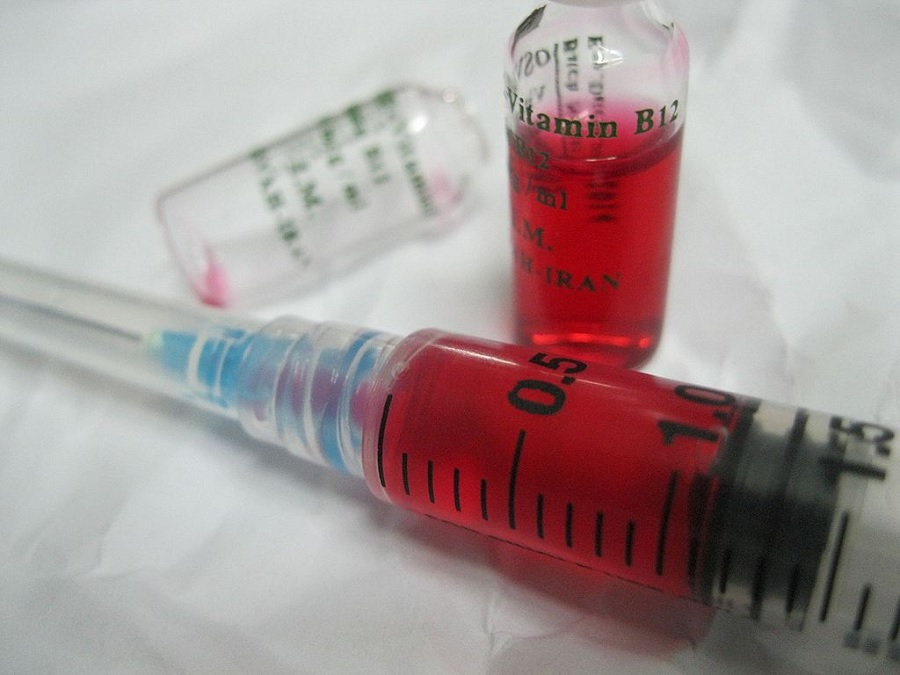A person suffering from pernicious anemia cannot produce enough healthy red blood cells. Since it is what transports oxygen throughout the body, this condition can lead to some serious health issues. However, there are readily available treatments and even proven healthy practices that one can maintain to manage this condition.
Pernicious anemia: Causes and symptoms
Pernicious anemia is sometimes mistaken as similar to vitamin B-12 deficiency. The confusion might be rooted in the fact that the production of healthy red blood cells requires certain levels of this vitamin, along with folate and iron. Of these three components, vitamin B-12 is absorbed by the body through a protein in the stomach called intrinsic factor.
The Pernicious Anemia Society stresses that this condition is an autoimmune disease because it results from the production of antibodies that eliminate the intrinsic factor. This then causes a person’s inability to absorb vitamin B-12. Meanwhile, the National Institute of Health also notes that people can also get diagnosed with pernicious anemia if their diet does not consist of enough vitamin B-12.
One of the known and most common symptoms of pernicious anemia is fatigue. Some other signs to look out for include shortness of breath, dizziness, difficulty in maintaining balance, pale or yellowish skin, chest pains, and coldness of the hands and feet, among others. It is pertinent to check the linked sources above to see the rest of the symptoms. And, as with other medical conditions, persistent symptoms should not be dismissed.
Pernicious anemia: How to treat it
The Latin origin of the word “pernicious” is “death” because getting diagnosed with pernicious anemia, until 1920, used to be a death sentence. Today, luckily, there are several ways to treat this condition by supplying the body with vitamin B-12.
It can be administered through injections, pills, nose gel, or spray. This is also why seeing a doctor is important because they can determine, depending on the severity of a patient’s pernicious anemia, what is the best treatment option. For patients who will be recommended with injected medicine, the frequency can also change over time.
With or without pernicious anemia, it is important to maintain a healthy diet. The best food sources of vitamin B-12 include various kinds of meat, seafood, eggs, and dairy products. People keeping a vegetarian or vegan diet can opt for soy-based drinks, fortified cereals, and foods packed with nutritional yeast.



 Novo Nordisk Appoints Greg Miley to Lead Corporate Affairs Amid U.S. Drug Pricing Pressure
Novo Nordisk Appoints Greg Miley to Lead Corporate Affairs Amid U.S. Drug Pricing Pressure  FDA Names Tracy Beth Høeg as Acting CDER Director After Richard Pazdur Announces Retirement
FDA Names Tracy Beth Høeg as Acting CDER Director After Richard Pazdur Announces Retirement  Pfizer Sues Novo Nordisk Over Alleged Tactics to Block Obesity Drug Competition
Pfizer Sues Novo Nordisk Over Alleged Tactics to Block Obesity Drug Competition  U.S. Experts to Reassess Newborn Hepatitis B Vaccination Guidelines Amid Growing Debate
U.S. Experts to Reassess Newborn Hepatitis B Vaccination Guidelines Amid Growing Debate  U.S. Backs Bayer in Supreme Court Battle Over Roundup Cancer Lawsuits
U.S. Backs Bayer in Supreme Court Battle Over Roundup Cancer Lawsuits  Innovent’s Xinermei Intensifies Weight-Loss Drug Battle in China
Innovent’s Xinermei Intensifies Weight-Loss Drug Battle in China  Eli Lilly Becomes First Pharma Giant to Hit $1 Trillion Amid Soaring Weight-Loss Drug Demand
Eli Lilly Becomes First Pharma Giant to Hit $1 Trillion Amid Soaring Weight-Loss Drug Demand  Trump Hints at Major Autism Announcement, Raises Questions on Tylenol Link
Trump Hints at Major Autism Announcement, Raises Questions on Tylenol Link  Cogent Biosciences Soars 120% on Breakthrough Phase 3 Results for Bezuclastinib in GIST Treatment
Cogent Biosciences Soars 120% on Breakthrough Phase 3 Results for Bezuclastinib in GIST Treatment  Pfizer Secures $10 Billion Deal for Obesity Drug Developer Metsera, Outbids Novo Nordisk
Pfizer Secures $10 Billion Deal for Obesity Drug Developer Metsera, Outbids Novo Nordisk  Trump Signs Executive Order to Boost AI Research in Childhood Cancer
Trump Signs Executive Order to Boost AI Research in Childhood Cancer  Eli Lilly’s Inluriyo Gains FDA Approval for Advanced Breast Cancer Treatment
Eli Lilly’s Inluriyo Gains FDA Approval for Advanced Breast Cancer Treatment  Merck Nears Acquisition of Cidara Therapeutics at Significant Premium
Merck Nears Acquisition of Cidara Therapeutics at Significant Premium 































